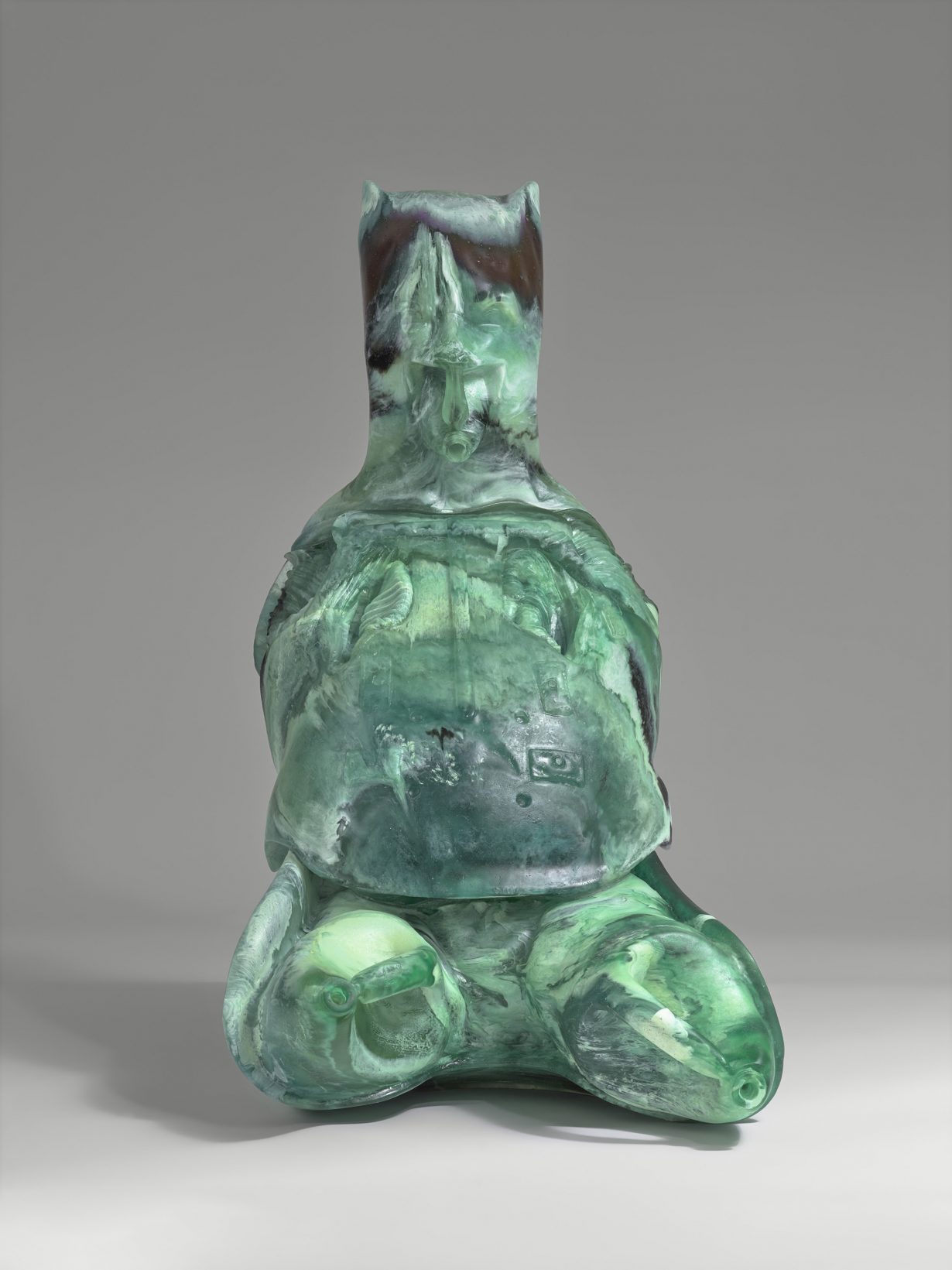Joy Revision at David Zwirner, London attempts to render invisible presences in the physical world
Pathetically, the skeletons are still game. In the first gallery of photograms on velvet, their macabre rainbow-hued silhouettes strike cute, come-hither poses on designer chairs. Coloured light shoots outward from skulls: a headdress of desiring arrows. They’re like a horror-film sendup of the women, naked and solo at home, depicted in countless postimpressionist fantasies of the bourgeois good life. Get up close and you can make out a delicate latticework encasing the ribs: it’s a body stocking. What a sad joke: don’t they know that this waiting and wanting is in vain?
Ursuţa has long explored the twin drives of sex and violence in her sculpture, most recently in glassworks suggesting mutilated bodies cast from empty plastic bottles, Halloween masks and bondage wear. The knowing poor taste and black comedy still resonate through Joy Revision, where skeletons are as likely to recall the ways we try to laugh (or scream) away our anxieties around mortality via grotesques drawn from scary movies or heavy-metal T-shirts, as from grave memento mori. Yet this latest exhibition, inspired by a sudden, recent bereavement, offers a more focused meditation on how art has wrestled with the impossible-to-imagine reality of death. Created by draping velvet soaked in photographic chemicals over skeletons and sculptural assemblages and exposing it to light, the photograms look back to various funereal and occult practices. These include death masks intended to guide the soul back to its body in Ancient Egypt or those made by artists to fashion posthumous likenesses – the Shroud of Turin with its supposed miraculous imprint of Jesus’s face – as well as nineteenth-century spirit photography.

On one hand, Ursuţa seems to position these different takes on life after death as an elaborate avoidance strategy; a refusal to acknowledge our inevitable, irreversible annihilation. The skeletons who open the exhibition are stuck in denial, apparently waiting for a lost lover to return. Yet in the attempt to render invisible presences in the physical world, those bygone practices also speak to bodily concerns about death in a way that our present culture of fleeting digital imagery cannot. This is not just about the physicality of the corpse but also the need for material preservation in the face of deterioration, and the way traces of the dead are imprinted in the bodies of the living, surviving in our memories and daily habits. The expectant skeletons could be seen as a kind of living dead, still hooked to shared dreams cut short.
The uncanny hinterland occupied by those left behind is explored across the three floors of the gallery’s Regency townhouse setting, envisioned by Ursuţa as different rooms in a home whose seeming solidity has been shattered. Beginning with an optimistic blue, the walls are painted to subtly call attention to their construction, à la Blinky Palermo – an artist known both for his abstract paintings highlighting architectural features, and for dying young. Props used in the photograms nod to different interiors, and the occasional glass sculptures that punctuate the show are conceived on a domestic scale. At times their size and shape suggest commemorative busts or those statues of Anubis as a jackal, guiding spirits to the underworld – as well as a family dog. One standout work in rippling marbled lilac and opaque black glass, Grande Odalisque (2022), is cast from an assemblage that echoes how the photograms are made, with a cloth draped over what seems to be a skeleton wearing a crown. All at once, it’s Queen Victoria in mourning, a rudimentary ghost costume, dust-sheeted furniture in a shut-up room and the Holy Shroud. Throughout, high culture and low, the sombre and silly, are deftly layered, drawing energy from the contrasting extremes of feeling provoked by death: the profound loss, the bad punchline.

Across its three ascending levels, the show’s structure explores grief as an ongoing process. It ends with brown walls – a literalisation of everything turning to shit – in the room that no one enters: the one with the untouched gym equipment. Misintegration (2022), a glass sculpture made from a composite of cast plastic junk, suggests a malformed Batman. This broken-down superhero stares at Terminal Fitness (2021), a photogram featuring an exercise machine that it doesn’t have the limbs to use. Though far from becalmed acceptance, it suggests a recognition of sorts.
Joy Revision at David Zwirner, London, through 29 October
